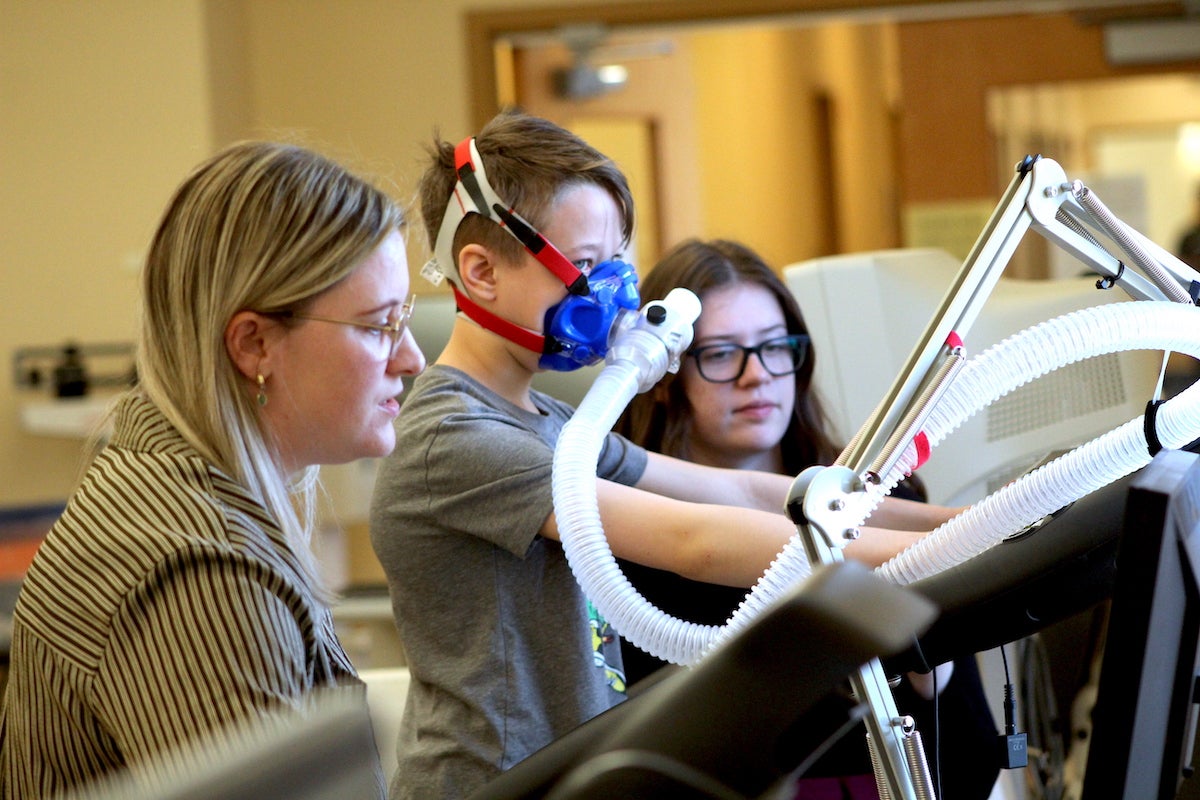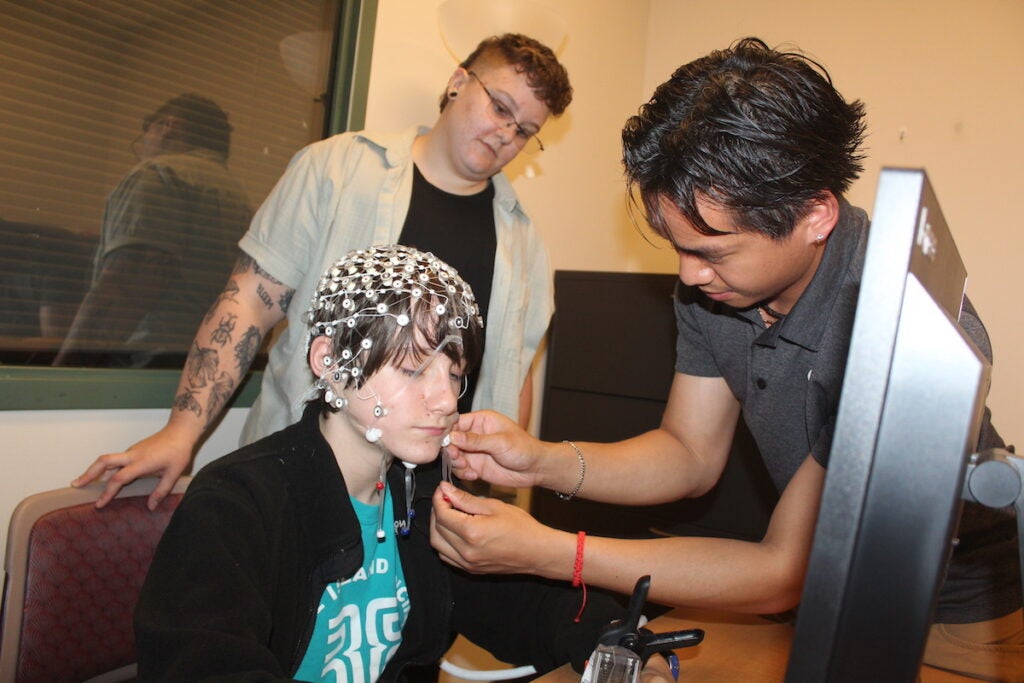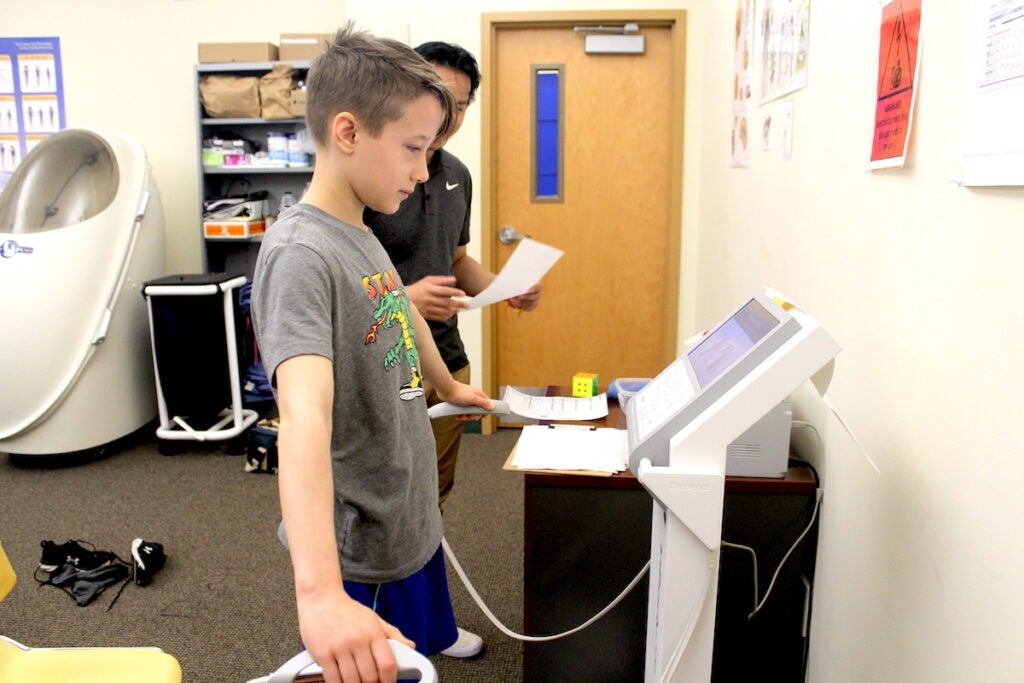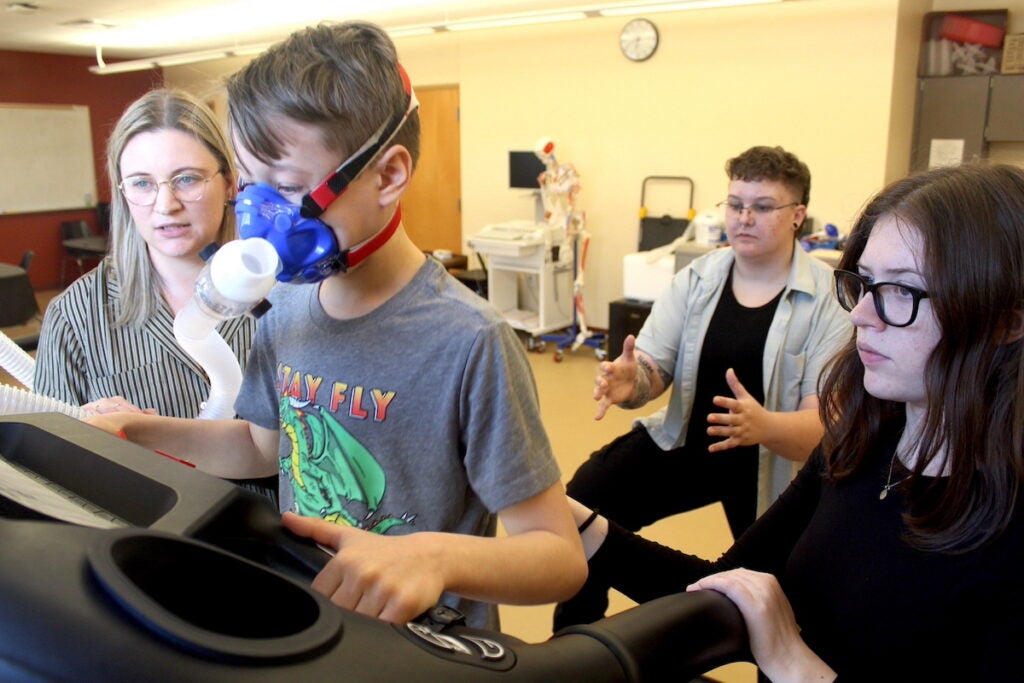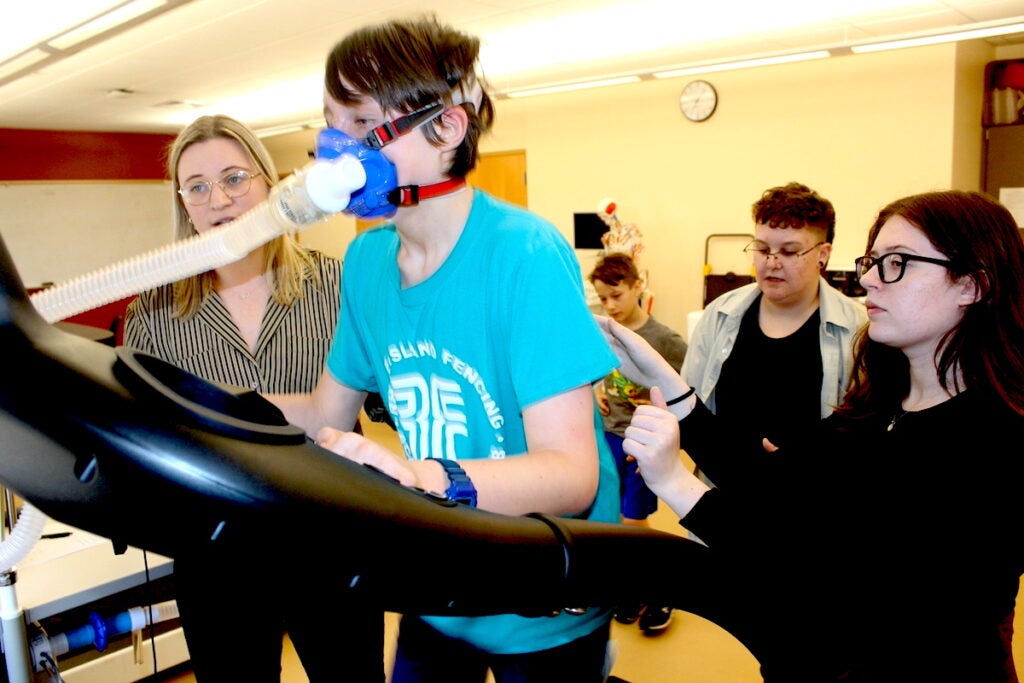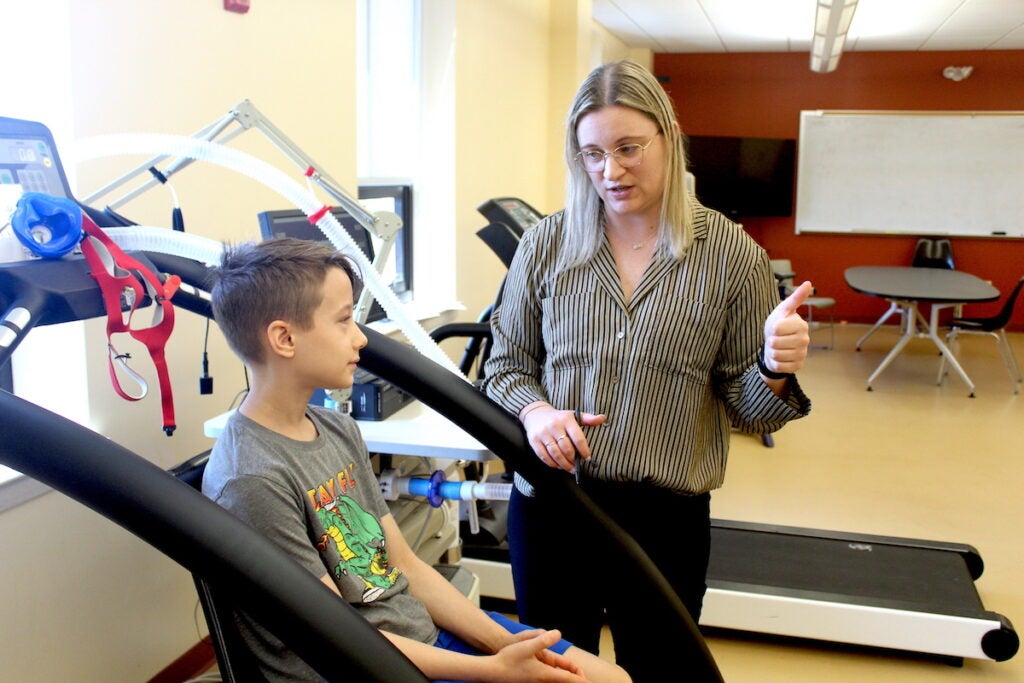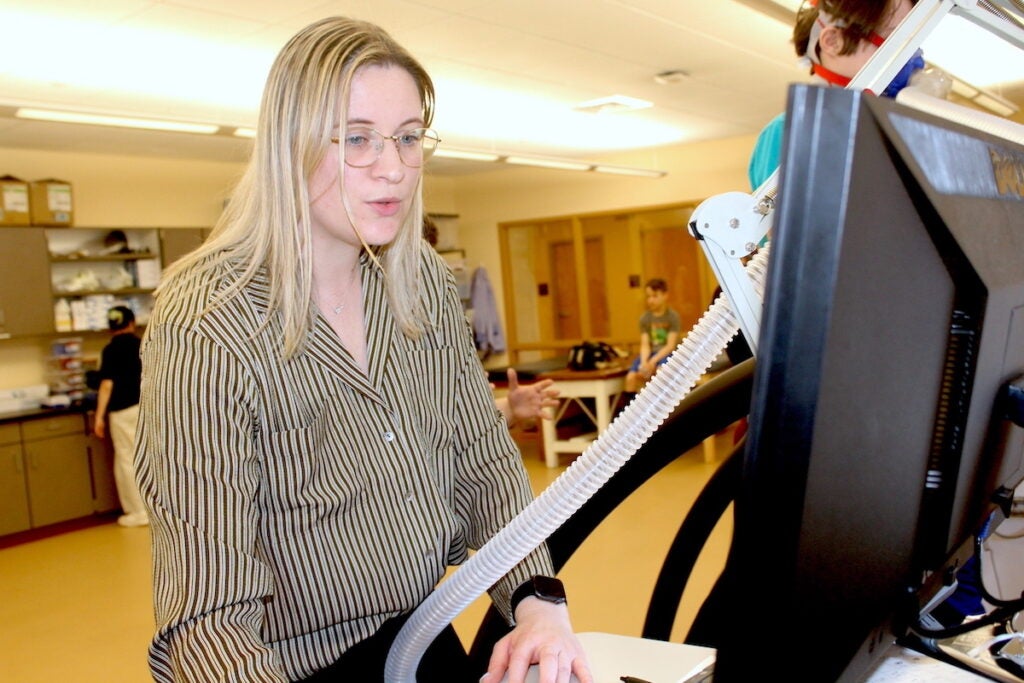URI Kinesiology Professor Nicole Logan’s funded study aims to support alternative methods of treating the common childhood condition
Attention Deficit Hyperactivity Disorder can impact many common childhood milestones and cognitive processes, such as decision-making, inhibitory control, language development, and goal-setting. Studies by University of Rhode Island kinesiology Assistant Professor Nicole Logan have shown that physical activity can be beneficial for the development of such cognitive processes, particularly in children who may have room to improve in those areas.
Logan is expanding on her previous work in a new study, funded by a $25,000 grant from the Rhode Island Foundation, that compares the impact of physical activity on children with ADHD with their neurotypical peers. They are examining the association between various levels of physical activity and neurocognitive functioning in all children, particularly those with ADHD who might struggle with daily executive functioning skills, Logan said.
Logan and her team—which includes Department of Communicative Disorders professors Vanessa Harwood and Alisa Baron, as well as five graduate students and 10 undergrad students—are recruiting children and adolescents ages 6 to 17 with and without ADHD to participate in the study.
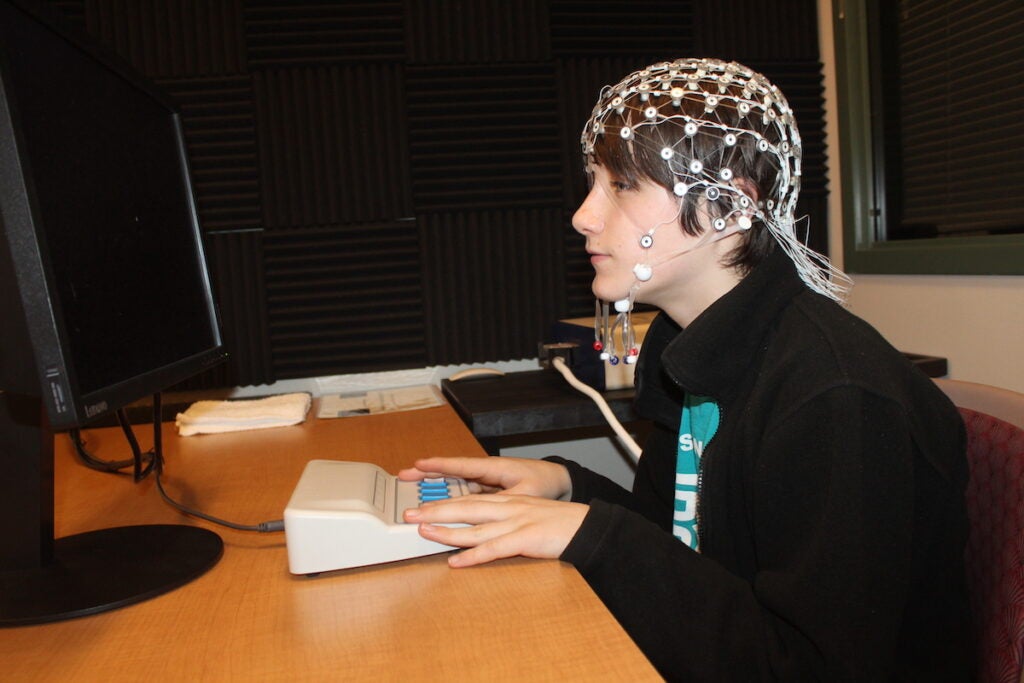
Children come into Logan’s lab in Independence Square on the Kingston campus for two visits, a week a part. On the first, they are introduced to the techniques and equipment used in the study, and take standardized academic achievement tests similar to what they would do in school—reading, math, oral achievement, spelling and language development—as well as a physical fitness test on a treadmill. After the first session, the participants are given a smart watch to record their physical activity, the intensity of the activity, and the time they spend being physically active over the next week.
“I’m really interested in looking at what a typical day looks like for a child with ADHD, and the typical activity levels,” Logan said. “There’s hyperactivity and inattention. So we might see differences in activity levels depending on which symptom is greater in a child. Hyperactivity-based children are very active. Maybe those children need more bouts of physical activity throughout the day to really burn off some energy and to refocus when they come back in for the school day. That goes in line with where physical activity guidelines are going… more physical activity spread throughout the day might be more beneficial for us.”
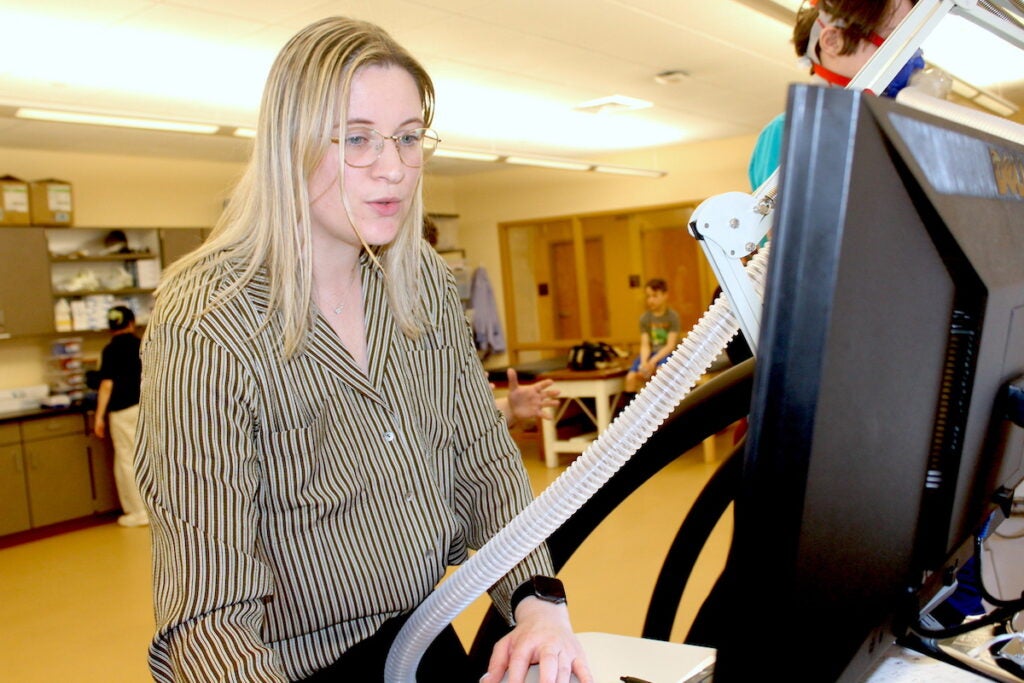
On the second visit to the lab, the children complete cognitive tasks while wearing an electroencephalogram net (EEG) to measure neuroelectric brain activity. Children are also assessed on cardiorespiratory fitness, physical activity, body composition, muscular strength, language and academic development, and mental health.
“Physical activity promotes neurogenesis in the brain. The brain is very plastic, always changing and adapting and making new connections. These new connections are stimulated through exercise,” Logan said. “It’s a kind of stimulant for neuronal growth and change. Music, learning a new language, physical activity—all these things stimulate the brain, but exercise is unique in that it has the added benefit of preventing chronic diseases and improving quality of life in every part of the lifespan.”
Logan’s study aims to collect a wealth of data to inform future studies on ADHD, develop physical activity interventions to help stimulate cognitive development, and potentially help guide the next physical activity guidelines from the federal Office of Disease Prevention and Health Promotion. New interventions could potentially supplement the use of ADHD medications, of which there has been a shortage in recent years while diagnoses of the condition are ever increasing.
“We expect the results will support alternative methods of managing childhood ADHD symptoms, such as with targeted physical activity recommendations,” Logan said. “Because physical activity and related health outcomes like fitness, muscular strength, and body composition are closely associated with neurocognitive function throughout childhood, we hope to provide unique health recommendations that will benefit children with ADHD in particular.”
The graduate students working on the project have presented the research at the Neuroscience Symposium and the College of Health Sciences Research Night in April. They are scheduled to present the study at the American College of Sports Medicine conference in Boston later in May.
The team has had success in recruitment so far, collecting 50 participants since the study began in July 2023. The lab is still actively recruiting children with ADHD (6-17 years old) throughout the summer. Anyone interested in participating can email Logan at nicolelogan@uri.edu or visit the study’s recruitment page at www.loganlaburi.com/participate-in-research.

